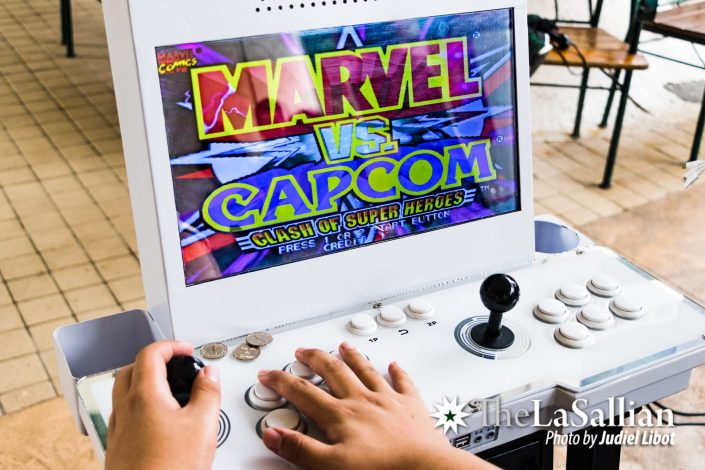In the far corners of the mall, the clang of gaming tokens rattling in pockets, cheers of children, and jingles from nearby gacha machines are lost in the cacophony of players duking it out against each other amid the glow of a flashing screen. Nearby spectators are treated to an orchestra of joystick clicks and button clattering, alongside the odd “K.O.” bellowing from worn speakers. The arcade is where many were introduced to fighting game classics such as Tekken or Street Fighter. However, a certain series in the genre has stood the test of time and remained in the hearts of local players—Marvel vs. Capcom (MvC).
A fusion of franchises
MvC encompasses an entire franchise that has roots as far back as 1996. It began with gaming company, Capcom, fusing Marvel-licensed fighting games with their own popular series, Street Fighter, in their release of X-Men vs. Street Fighter. Since then, the heroes of Marvel and the fighters of Capcom have done battle in various arcades and consoles.
Miguel Jose Bautista is one of many players who’ve fostered a love and passion for the game, playing competitively as far back as 2011. Now donning the gamertag Alpha MJB, he describes the series of games as one where you knock out your opponent’s health bar before yours runs out. The series can be considered a staple in the fighting game genre for most players. “For me, [MvC] revolutionized the three-on-three genre [in fighting games],” Miguel explains.
In the heat of the fight
The series hosts a number of unique concepts that appear in many of its games. For example, the newest installment Marvel vs. Capcom: Infinite allows you to choose an Infinity Stone to aid you in combat. Each stone grants you a special ability—the Space Stone brings your enemies closer, while the Reality Stone launches a homing projectile.
MvC also has a unique mechanic called the assist call, where one of your other characters briefly appear, attack, then disappear off-screen. Calling an assist will also leave characters vulnerable to any attack—a clear price to pay in order to reap the mechanic’s benefits.
With numerous gameplay options available, professional players have their own unique approaches to the game. Miguel cites a player he follows, FChamp, as a source of inspiration for his gameplay, “One thing he taught me [in learning the game] is to learn one combo and find ways to get that combo.” By studying every variable of the initial hit of a combo—spacing, speed, reach, and use of an assist—any battle situation can be prepared for.

New age of heroes
Professional players in the fighting game genre populate a local competitive scene, one that has developed in an interesting manner. There are aspects to how the game is played in the Philippines that make the gameplay experience unique, with the status quo deviating from conventional practices in the international scene.
“In Marvel vs. Capcom 2 (MvC 2), we [didn’t] follow the traditional settings of normal damage,” Miguel explains. “We used lowest damage [settings] because it gives you more value for your money in terms of putting your five peso coin in the arcade, so you get to play [for a longer time].”
Miguel describes the local scene as being stagnant in terms of any change in the players who compete, as new players are not very common. He mentions that the game is one that takes a long period of time to become familiar with, making it difficult for new players to come in and get up to speed. This is evident in how their latest game, Marvel vs. Capcom: Infinite, did not appeal to new players, with its release receiving a lackluster response. While veteran players gave the newer game a try, poor reception led them back to the older games.
All things considered, Miguel believes that the Philippines is a country that is naturally drawn to fighting games. On September 29, in the arena of Rev Major—the biggest fighting game tournament in the Philippines—MvC 2 was on the main stage for all to see, with Marvel vs Capcom 3 and MvC hosted as a side tournament. The country also boasts strong results in popular fighting game competitions; recently, local player AK made headlines by winning EVO Japan 2018, one of the biggest Tekken tournaments in the world.
Miguel draws his fighting spirit from a fondness for what he does. “I really love the game: the way it looks and the way it plays…we are very passionate [about] the things we love.” Whether it is in testing game mechanics, pushing the game’s limits, or just enjoying seeing their favorite characters on screen, the game has opened an avenue through which an entire community could come together in order to explore a shared love for playing.
Though both old and new generations of gamers may lean toward the newest three-on-three fighting game, Dragonball Fighter Z—or stick to mainstream titles like Tekken—MvC games are not forgotten as they continue lifting the spirits of a small but proud circle of players, still fighting round after round.
